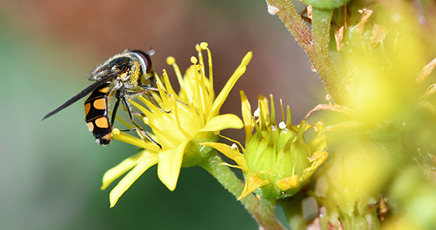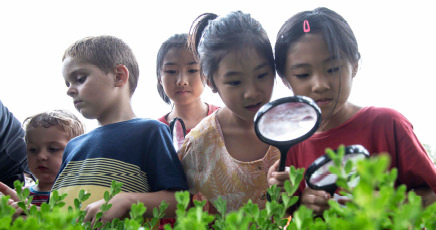STORY
Suyin was enjoying the weekly challenge with her grandfather. She was learning a lot about invertebrates and was getting a better understanding of their importance. While she has managed to provide better weekly observations of the animals, her grandfather’s tally always seemed higher than hers.
Suyin’s grandfather explained to Suyin that for a long time, her grandmother and himself have been deliberately planting flowers with food crops. The flowering plants are not only pretty to look at, but pollinators and predators love them. While Suyin’s garden has lots of beautiful flowering plants, her grandparents’ farm is a well-established home for these wonderful creatures.

Planting flowers with food crops increases biodiversity, and is known as beneficial planting. Beneficial planting not only makes our garden beds look more attractive to us, it also makes gardens look more attractive to pollinators and predators, which in turn, help to fertilise and protect crops from pest invertebrates.
This learning activity is the first part of a sequence of 3 individual learning activities focused on creating a beneficial garden. The order of these activities are: assessment, investigation and planting.
For children to:
- undertake a planting activity
- consolidate the knowledge learnt earlier in this activity sequence
- test the hypothesis that beneficial insects can be attracted by planting flowers
- monitor the growth of the beneficial garden
- record the presence of beneficial insects attracted to the garden.
Different plants grow best at different times of the year. Choose the plants according to the advice on labels and in garden guides such as the Gardenate app or the Gardenate website. During the warmer months (spring and summer and autumn), it is recommended that you run this as a morning learning activity. This will help avoid heat stress for people and plants.
Introduction
Planting flowering plants next to a food crop is known as beneficial planting. The flowering plants (beneficial plants) attract pollinators and predators, which help increase your food crop and protect plants from pests. In this activity, children will be applying the information discovered in the assessment and investigation learning activities already undertaken in this sequence. This activity provides opportunities to apply learning, test hypotheses and monitor progress.
*Time allocation will be dependent on site selection and travel time.
Checklist
Instructions
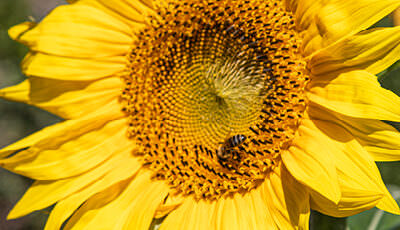
STEP 1
Review the garden insects
As a group discuss invertebrates, specifically insects and how we view their presence in the garden.
Ask the children to suggest some insects that could be listed under the following three headings:
- Pests
- Pollinators
- Predators
(Refer back to the investigation learning activity if you need help with the different types of insects and how they impact the garden).
Beneficial insects include:
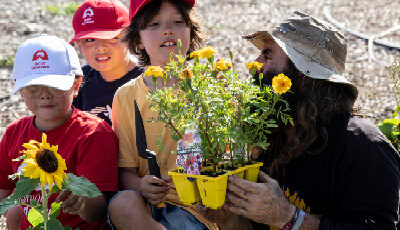
STEP 2
Make connections between the crop and the beneficial plants
Show the children the punnets of crop seedlings and the punnets of flowering plants.
As a group, ask the children to make connections between the food crop and the flowers that have been selected.
Ask the children to make a hypothesis (a smart guess) about how the insects found in the assessment and investigation learning activities might be attracted by these flowering plants.
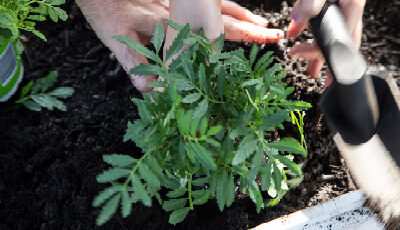
STEP 3
Planning the planting
Creating a beneficial garden can be a bit of an experiment. Use the activity sheet to map the garden and the beneficial links that you plan on creating.
Use the labels on the seedling punnets to decide on how to space your beneficial plants around your crop.
Beneficial plants are often planted in clumps around the outside of the garden bed. This helps with wise use of garden bed space and it helps the beneficial insects to see them.
It is best to plant your beneficial plants at the same time as your food crops.
When planting seedlings, space them in their pots out on top of the soil, check the label, and see that you have spaced them correctly with a ruler.
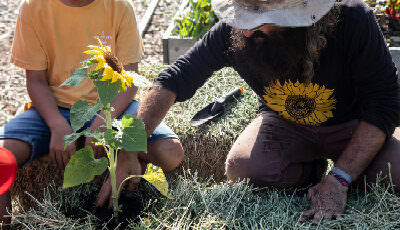
STEP 4
Plant, care and monitor
Use a trowel to dig a hole just big enough so the plant’s root section can be inserted. Tap the pot gently and squeeze the plant out without damaging the roots, place it in the hole and fill it with soil.
Create a saucer shaped depression in the soil to act as a dam, and then water in the plants gently. Mulch around them to help reduce water loss and suppress weeds.
Check your beneficial plantings over time and make sure they are growing well. Can you find insects to see if the beneficial planting is attracting insects to help your crop? What other biodiversity improvements do you notice?
Complete the activity sheet and the links that you hoped would occur between the beneficial plants and the food crops.
Take notes about the different types of insect you find:
- are they pest species or are they beneficial?
- are there changes or improvements that you could make to the plantings?
Extension Activity
Design an experiment to assess whether beneficial planting is effective. What could you change or remove to test whether you’re on the right track?
Design a poster to promote beneficial planting. Focus on three key messages that you would like your audience to know.
Curriculum and Framework Links
SCIENCE
Year 2: ACSSU030, ACSHE035
Year 3: ACSSU044, ACSIS054
Year 4: ACSHE062, ACSIS064
Year 5: ACSHE083
Year 6: ACSSU094, ACSHE100
Year 7: ACSHE120
Year 8: ACSHE135
HUMANITIES AND SOCIAL SCIENCES
Year 2: ACHASSI042
Year 3: ACHASSI052, ACHASSI059, ACHASSI060
Year 4: ACHASSI080, ACHASSK088, ACHASSK090
Year 5: ACHASSI102, ACHASSK120
Year 6: ACHASSI122, ACHASSI130
DESIGN AND TECHNOLOGIES
Year 2: ACTDEK003
Year 3 & 4: ACTDEP017
Year 5 & 6: ACTDEP019
Year 7 & 8: ACTDEK032
HEALTH AND PHYSICAL EDUCATION
Year 2: ACPPS018, ACPPS022, ACPPS023
Year 3 & 4: ACPPS036, ACPPS040, ACPPS041
Year 5 & 6: ACPPS054, ACPPS059
Year 7 & 8: ACPPS073, ACPPS078
ETHICAL UNDERSTANDING
Exploring values, rights and responsibilities
PERSONAL AND SOCIAL CAPABILITY
Social awareness
CURRICULUM CONNECTIONS
Outdoor Learning
CROSS CURRICULUM PRIORITY
Sustainability
My Time, Our Place: Framework for School Age Care
Outcome 2 and 4
Reference List
ONLINE RESOURCES
Download the Gardenate app or use the Gardenate website to help determine the timing, spacing, and other compatible plants required for your climate zone.
Consult this companion planting fact sheet on the Gardening Australia website
Refer to Gardening Australia’s Crop Rotation information to help keep the soil and food crops healthy.
Here is an interesting discussion on companion planting and biodiversity on the Sustainable Gardening Australia website.
Read about holistic gardening practices in this Junior Landcare case study from Newbery Primary School.
Here is some further information about these common beneficial bugs
- Bees (native and European)
- Ladybugs
- Hover Flies
- Mantids
WATCH
ABC Gardening Australia Companions in the Garden (6mins)
IMAGE ATTRIBUTION
Image of bee on grevillea by Noemie W. (2020 What’s in your backyard challenge Top 100)
ACKNOWLEDGEMENT
This learning activity has been developed in partnership with the Victorian Government Department of Environment, Land, Water and Planning
We value your feedback
When you have finished this learning activity, please tell us what you think with our survey.
Your feedback will help Landcare Australia improve the activities in the Junior Landcare Learning Centre.
Why not try one of our other Junior Landcare learning activities?
Creating a butterfly garden
Biodiversity
Love Letters to the Land
Biodiversity|First Nations Perspectives|Food Production|Waste Management
Creating a sensory garden
Biodiversity
Understanding weeds: life cycle
Biodiversity
